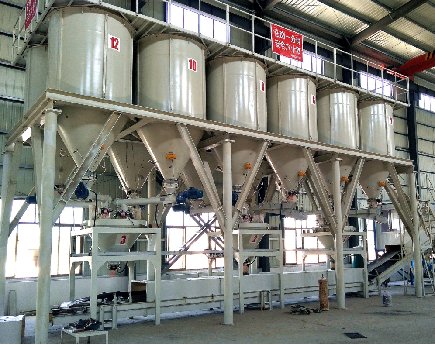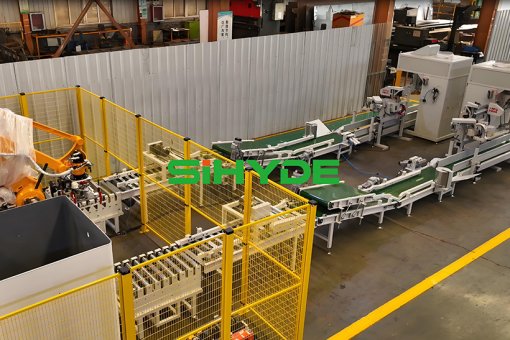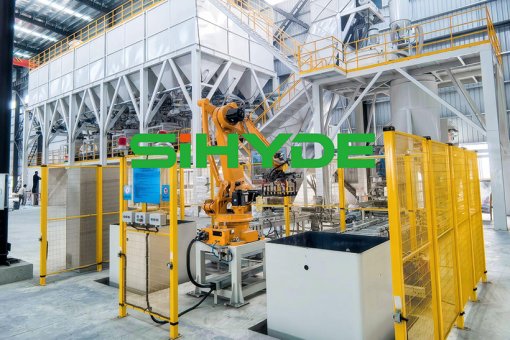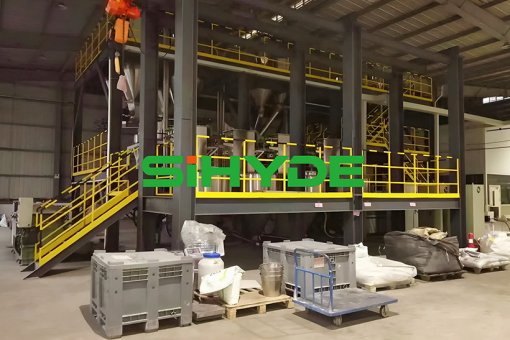Automatic batching production line-How much do you know about refractory raw materials
There are many types of refractory raw materials, and the classification methods are also diverse. According to the way the raw materials are generated, they can be divided into two categories: natural raw materials and artificial synthetic raw materials. Natural mineral raw materials are still the main body of refractory raw materials. Various minerals existing in nature are composed of various elements that constitute these minerals. It has been proven that the total amount of oxygen, silicon and aluminum accounts for about 90% of the total amount of elements in the earth's crust. Oxides, silicates and aluminosilicate minerals have a clear advantage and are natural refractory raw materials with huge reserves.

The main varieties of natural refractory raw materials are: silica, quartz, diatomaceous earth, wax stone, clay, bauxite, kyanite mineral raw materials, magnesite, dolomite, limestone, forsterite, serpentine, talc, chlorite, zircon, baddeleyite, perlite, chromite and natural graphite, etc. Natural raw materials usually contain more impurities, unstable composition, and large fluctuations in performance. Only a few raw materials can be used directly, and most of them must be purified, classified and even calcined before they can meet the production requirements of refractory materials.
Classification of refractory raw materials
Siliceous and semi-siliceous raw materials: silica (vein quartz, quartzite, quartz sandstone, flint rock), fused quartz, silicon micropowder, pyrophyllite, diatomaceous earth
Clay raw materials: kaolin, ball clay, refractory clay (soft clay, hard clay, semi-soft clay), coke gemstone
High-alumina raw materials: bauxite, kyanite raw materials (kyanite, andalusite, sillimanite), synthetic mullite (mullite, zircon mullite)
Alumina raw materials: aluminum hydroxide, alumina (calcined alumina, sintered alumina, plate-like alumina), fused alumina (fused white corundum, Fused sub-white corundum, fused brown corundum, fused dense corundum, zirconium corundum)
Alkaline raw materials: light-burned magnesia, sintered magnesia, fused magnesia, seawater magnesia, dolomite sand, synthetic magnesia dolomite sand, calcium sand, magnesium calcium sand
Spinel family raw materials: magnesia aluminum spinel, magnesia chrome sand, chromite
Magnesium aluminum siliceous raw materials: forsterite, serpentine, talc, chlorite, sepiolite
Carbonaceous raw materials: natural flake graphite, earthy graphite, coke, petroleum coke, bituminous coal and anthracite
Zirconium-based raw materials: zircon, zirconite, zirconium oxide, zirconium corundum, zirconium mullite
Low expansion raw materials: synthetic cordierite, aluminum titanate, fused quartz, lithium-containing minerals
Non-oxide raw materials: silicon carbide, silicon nitride, sialon, boron nitride, aluminum nitride, boron carbide
Note: Part of the content of the article comes from the Internet. If there is any infringement, please contact us to delete it. Thank you.





